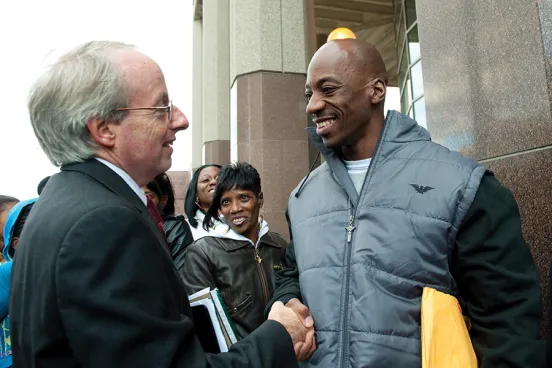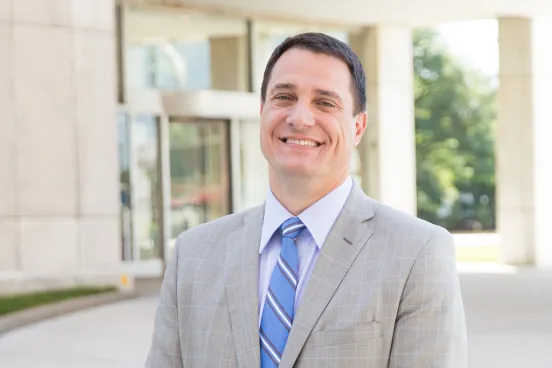
When Detroit became the largest city in U.S. history to file for bankruptcy, it was a bad thing—unless you have the unique world-view of a bankruptcy lawyer, in which case it was marvelous news, worthy of celebration.
It’s not the fee-generating potential for the Brotherhood that causes bankruptcy lawyers to delight in Detroit’s filing. It is that the city finally was forced to confront its unsustainable economic path. That’s what bankruptcy is all about.
Starting with some basic numbers, on a good year, Detroit can raise about a billion dollars or so in tax revenue. The problem is that it has accrued about $18 billion in debt (pension, bond, and otherwise). That means even if it cut every single city service—and residents still chose to remain and pay taxes in such an unusual place—it would take more than a decade to work it all off. Many are agitated about allocating the blame; some complain of widespread financial incompetence in prior municipal administrations; others point to the macroeconomic trends fueling massive depopulation of the nation’s manufacturing hubs. All talk past each other.
We are where we are: an unsupportable debt overhang crippling a city that is trying desperately to reinvent itself before a demographic death spiral sets in.
This is where bankruptcy law comes in.
Anyone can go broke, but only some get to declare bankruptcy. One power of bankruptcy law—specifically, its reorganization branch—is to breathe new life into struggling debtors by reducing debt pursuant to consensual creditor resolution. Chapter 11 is world-renowned for its capacity to do just that, capturing the genius of super-majoritarian contract modification.
When Gov. Rick Snyder, ’82, appointed Kevyn Orr, ’83, as emergency financial manager, Orr engaged the major creditor constituencies almost immediately.
But he faced two problems: one generic to financial default negotiations and one specific to Detroit. The generic problem is the premise of reorganization law. Creditors holding contract rights cannot be forced into concessions.
Thus, in multi-party talks (Detroit has tens of thousands of creditors), there is massive holdup potential. Bankruptcy law allows a super-majority, subject to certain safeguards, to bind dissidents to accept a deal that the collective thinks is fair.
Detroit also faced a special problem with unfunded pension liabilities. The Michigan Constitution contains a provision purporting to preclude the impairment of pensions, suggesting strongly that Orr would be powerless to insist upon pension cuts, as would indeed the Legislature, in these negotiation talks.
Filing for “adjustment” in chapter 9—a municipal analogue to corporate reorganization in chapter 11—allowed Orr both to tap into bankruptcy’s voting rules and, arguably and contentiously, to bypass the Michigan constitutional protection. Given that the pension and health care labor debts constitute billions of dollars of Detroit’s liabilities, the ability to modify pension obligations is crucial.
Debt restructuring in successful chapter 11s—and in successful chapter 9s—is only half of the equation. What is equally important is a sustainable go-forward business plan. All cities can do is raise—or, in Detroit’s case, preserve—the tax base.
Yes, it can cut services as population dwindles to pare costs, but there are certain fixed costs that cannot be cut. Recognizing this touchstone of reorganization, the city, through Orr, and indeed the bankruptcy judge (Michigan Law Lecturer Steven Rhodes, ’73, who holds ultimate authority over confirming the plan), have been focused on what the plan for the future is regarding (a) sustainable budgeting, including annual operating expenses well within revenue targets and with a margin for debt service, and (b) providing for long-deferred capital expenditures. That’s right, the bankruptcy judge wants to make sure Detroit will incur enough new debt as part of its plan to deal with its old debt; this outlay is on the order of magnitude of a billion dollars.
This last point is one that bankruptcy types take seriously.
Nobody wants a failed reorganization; the key to success starts with a truly accurate assessment of financial needs. Budgetary realism has been the hallmark of few municipal governments, and so Detroit’s plan needs to convince the bankruptcy judge in the short term, and the bond markets in the long term, that a sustainable level of expenditures is being financed, both recurring operations and long-deferred infrastructure projects.
How does this all shake out with Detroit’s plan in particular?
The two big creditor constituencies are the bondholders and the labor groups (workers and retirees, unionized and not).
The bondholders—or more precisely, their insurance underwriters—are looking at well over a 50 percent haircut on their principal, as of the time this article is going to press, based on the most recent amended plan that has been submitted for creditor consideration.
The workers will hurt less—but will still hurt—because of an external cash injection from an interesting syndicate of rich foundations based well outside Detroit and a Michigan governor running for re-election.
The better part of a billion dollars will be thrown in, exclusively to go to pensioners, by these groups in exchange for the city relinquishing its claims to the artwork at the Detroit Institute of Arts. These groups have said they’ll throw in this money if the parties agree to a consensual plan (i.e., there are enough votes to confirm the plan) and the art is left untouched and protected for future generations.
Will it work out?
Most likely, yes. Hardened bankruptcy lawyers will tell you consensual plans are the norm in bankruptcy and “cramdown”—a backup procedure for still confirming a plan even without the requisite voting thresholds met—is the exception. In fact, it’s not entirely clear what cramdown even means in a chapter 9. In chapter 11, it means the shareholders are all wiped out and the creditors take over the company. There is no analogue in chapter 9 because there are no shareholders to wipe out, and private creditors can’t own a public governmental entity.
Even if likely, it will not be a smooth road to confirmation.
The unions are angry because they don’t think their pensions should have been impaired in the first place; they are appealing the bankruptcy court’s interpretation of the Michigan Constitution to the Sixth Circuit. The bond underwriters are angry because they don’t think they should be taking it more on the chin than the unions; they have asked for more discovery on the appraisals of the DIA, signaling their continued belief they are entitled to liquidate those assets. The bondholders will scream that the city will never get financing again in the bond markets. (It will.) The unions will scream that everyone will quit. (They won’t.) Chapter 9, much like chapter 11, much like corporate negotiations generally come to think of it, involves no small amount of posturing bravado. They’ll get there.
Bankruptcy law can do a lot, like help recover a fundamentally sound business enterprise that has been overburdened by debt.
But it cannot design cars that people want to drive or make residents want to live and pay taxes in a city. The true challenge for Detroit is not whether it will confirm a chapter 9 plan of adjustment, or not even whether it can stick to the new financial regime that plan proposes.
It is whether the city leaders, who will remain long after Kevyn Orr has left, can design a vibrant urban renewal plan, undistracted by the travails of financial default.
Bankruptcy can help them escape that distraction, but it cannot deposit creativity into brains.
Professor John A. E. Pottow is an internationally recognized expert in bankruptcy and commercial law. He has taught at Michigan Law since 2003.








